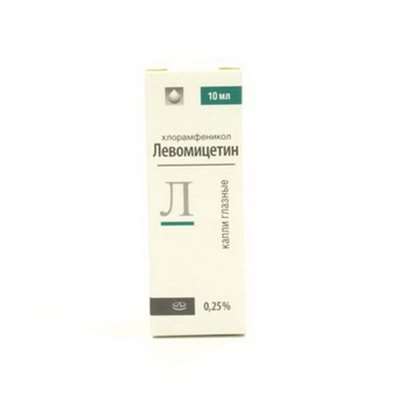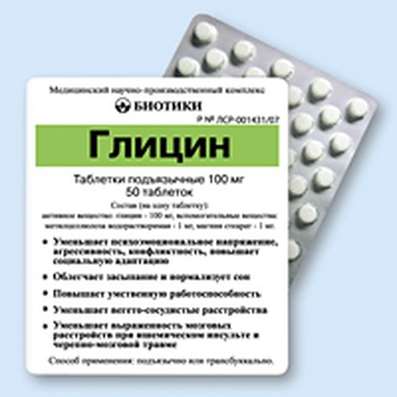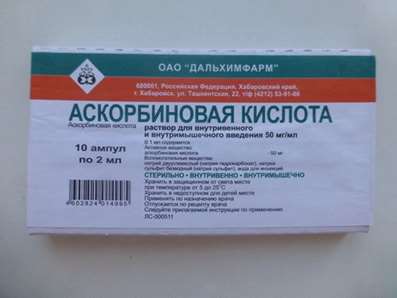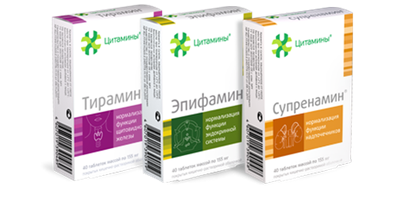Instruction for use: Artrosilene
I want this, give me price
Active substance Ketoprofen
ATX code M01AE03Ketoprofen
Pharmacological group
NSAIDs - Propionic acid derivatives
Nosological classification (ICD-10)
L40.5 Arthropathy psoriasis (M07.0-M07.3 *, M09.0 *)
Arthritis psoriatic, Arthropathic form of psoriasis
M06.9 Other specified rheumatoid arthritis
Rheumatoid arthritis,Pain syndrome in rheumatic diseases, Pain in rheumatoid arthritis, Inflammation in rheumatoid arthritis, Degenerative forms of rheumatoid arthritis, Children's rheumatoid arthritis, Exacerbation of rheumatoid arthritis, Acute articular rheumatism, Rheumatic arthritis, Rheumatic polyarthritis, Rheumatoid arthritis, Rheumatic polyarthritis, Rheumatoid arthritis, Rheumatoid arthritis of active course, Rheumatoid arthritis, Rheumatoid polyarthritis, Acute rheumatoid arthritis, Acute rheumatism
M06.9 Other specified rheumatoid arthritis
Rheumatoid arthritis,Pain syndrome in rheumatic diseases, Pain in rheumatoid arthritis, Inflammation in rheumatoid arthritis, Degenerative forms of rheumatoid arthritis, Children's rheumatoid arthritis, Exacerbation of rheumatoid arthritis, Acute articular rheumatism, Rheumatic arthritis, Rheumatic polyarthritis, Rheumatoid arthritis, Rheumatic polyarthritis, Rheumatoid arthritis, Rheumatoid arthritis of active course, Rheumatoid arthritis, Rheumatoid polyarthritis, Acute rheumatoid arthritis, Acute rheumatism
M10 Gout
Exacerbation of gout, Acute articular attack with gout, Acute gouty attack, Gouty attack, Recurrent gout attacks, Chronic gout
M35 Other systemic involvement of connective tissue
M42 Osteochondrosis
Pain in spinal osteochondrosis, Cervical osteochondrosis, Radicular syndrome in osteochondrosis, intervertebral osteochondrosis, osteochondrosis, Osteochondrosis with radicular syndrome, Osteocondritis of the spine
M45 Ankylosing spondylitis
Ankylosing spondylarthrosis, Marie-Strumpel disease, Ankylosing spondylitis, Pain syndrome in acute inflammatory diseases of the musculoskeletal system, Pain syndrome in chronic inflammatory diseases of the musculoskeletal system, Bechterew's disease, Ankylosing spondylitis, Diseases of the spinal column, Rheumatic spondylitis, Bechterew-Marie-Strumpel disease
M65 Synovitis and tendosynovitis
Acute tenosynovitis, Tendovaginitis (tenovaginitis), Tendosinovit (tenosynovitis), Tendovaginitis, Osteoarthritis in musculo-articular diseases, Inflammatory disease of soft tissues, Nonspecific tenosynovitis, Tendosinovit
M71 Other bursopathies
Bursitis, Bursopathy, Diseases of soft tissues, Osteoarthritis in musculo-articular diseases, Inflammatory disease of soft tissues, Subacute bursitis
M77.9 Other unspecified
Capsule, Periarthritis, Tendonitis, Tendopathy, Periarthropathy
M79.0 Other unspecified rheumatism
Degenerative rheumatic disease, Degenerative and rheumatic diseases of the tendons, Degenerative rheumatic diseases, Localized forms of rheumatism of soft tissues, Rheumatism, Rheumatism with a pronounced allergic component, Rheumatism of the articular and extraarticular, Rheumatic attack, Rheumatic complaints, Rheumatic diseases, Rheumatic disease of the spine, Relapses of rheumatism, Articular and extra-articular rheumatism, Articular and muscular rheumatism, Articular rheumatism, Articular syndrome with rheumatism, Chronic rheumatic pain, Chronic articular rheumatism, Rheumatoid diseases, Rheumatic diseases of the intervertebral disc
M79.1 Myalgia
Myofascial pain syndromes ,Pain syndrome in musculo-articular diseases, Pain syndrome in chronic inflammatory diseases of the musculoskeletal system, Pain in the muscles, Tenderness of muscles, Muscular soreness in severe physical exertion, Painful conditions of the musculoskeletal system, Pain in the musculoskeletal system, Pain in the muscles, Pain at rest, Muscle aches, Muscle pain, Musculoskeletal pain, Myalgia, Muscle pain, Muscle pain at rest, Muscle pain, Muscular pain of non-rheumatic origin, Muscle pain of rheumatic origin, Acute muscle pain, Rheumatic pain, Rheumatic pains, Myofascial syndrome, Fibromyalgia
M79.9 Disease of soft tissue, unspecified
Localized forms of inflammation of soft tissues
R52.0 Acute pain
Acute pain syndrome, Acute pain syndrome with osteoarthritis, Acute pain syndrome of traumatic origin, Severe pain of a neurogenic nature, Severe pain, Pain syndrome at delivery
R52.2 Other constant pain
Pain syndrome, rheumatic origin, Pain at vertebral lesions, Pain in the chamber, Pain for burns, Pain syndrome weak or moderate, Perioperative pain,Moderate to severe pain, Moderately or weakly expressed pain syndrome, Moderate to severe pain, Ear pain of otitis, Neuropathic pain, neuropathic pain
T14.9 Injury unspecified
Pain syndrome after trauma, Pain syndrome with injuries, Pain syndrome with trauma and after surgery, Pain in case of injury, Pain of a traumatic nature, Joint pain with injuries, Postoperative and post-traumatic pain, Pain in case of injury, Pain of a traumatic origin, Severe pain syndrome of traumatic origin, Deep tissue damage, Deep scratches on the trunk, Closed injury, Minor Household Injuries, Minor skin damage, Violations of the integrity of soft tissues, Uncomplicated trauma, Extensive traumatic injury, Acute pain syndrome of traumatic origin, Edema with trauma, Postponed sports injuries, Post-traumatic pain, Soft tissue injuries, Joint wounds, Sports injuries, Injury, Traumatic pain, Traumatic pains, Traumatic infiltrate,Injuries to sports
Z100 * CLASS XXII Surgical practice
Abdominal surgery, adenomectomy, Amputation, Coronary angioplasty, Angioplasty of the carotid arteries, Antiseptic skin treatment for wounds, Antiseptic Hand, Appendectomy, atherectomy, Balloon coronary angioplasty, Vaginal hysterectomy, The coronary bypass, Interventions in the vagina and cervix, Interventions on the bladder, Intervention in the mouth, Restoration and reconstructive surgery, Hand hygiene of medical personnel, Gynecologic surgery, Gynecological intervention, Gynecological surgery, Hypovolemic shock during operations, Disinfection of purulent wounds, Disinfection of wounds edges, Diagnostic intervention, Diagnostic procedures, Cervical Diathermocoagulation, Long-surgery, Replacing the fistula catheters, Infection in orthopedic surgery, Artificial heart valve, cystectomy, Short-term outpatient surgery, Short-term operation, Short surgical procedures, Krikotireotomiya, Blood loss during surgery, Bleeding during surgery and in the postoperative period, Kuldotsentez, laser photocoagulation, laser coagulation, retinal laser coagulation, Laparoscopy, Laparoscopy in Gynecology, CSF fistula, Small gynecological operations, Small surgical procedures, Mastectomy and subsequent plastic, mediastinotomy, Microsurgical operations on the ear, Mukogingivalnye operation, suturing, Minor surgery, neurosurgical operation, Immobilization of the eyeball in ophthalmic surgery, testectomy, pancreatectomy, Perikardektomiya, The period of rehabilitation after surgery, The period of, convalescence after surgery, Percutaneous transluminal coronary angioplasty, Pleural thoracentesis, Pneumonia postoperative and posttraumatic, Preparation for surgical procedures, Preparation for surgery, Preparation of the surgeon's hands before surgery, Preparation of the colon for surgical procedures, Postoperative aspiration pneumonia in neurosurgical and thoracic surgery, Postoperative nausea, Postoperative bleeding, postoperative granuloma, postoperative shock, The early postoperative period, myocardial revascularization, Radiectomy, gastric Resection, bowel resection, uterine Resection, liver Resection, enterectomy, Resection of part of the stomach, Reocclusion of the operated vessel, Bonding tissues during surgical procedures, Removal of sutures, Condition after eye surgery, Condition after surgery, Condition after surgery in the nasal cavity, Condition after gastrectomy, Status after resection of the small intestine, Condition after tonsillectomy, Condition after removal of the duodenum, Condition after phlebectomy, Vascular surgery, Splenectomy, Sterilization of surgical instruments, Sterilization of surgical instruments, sternotomy, Dental surgery, Dental intervention in periodontal tissues, strumectomy, Tonsillectomy, Thoracic surgery, total gastrectomy, Transdermal intravascular coronary angioplasty, Transurethral resection, Turbinektomiya, Removal of a tooth, cataract surgery, Removal of cysts, tonsillectomy, Removal of fibroids, Removing the mobile primary teeth, Removing polyps, Removing broken tooth, Removal of the uterus body, Removal of sutures, Urethrotomy, Fistula likvoroprovodyaschih ways, Frontoetmoidogaymorotomiya, Surgical infection, Surgical treatment of chronic limb ulcersm, Surgery, The surgery in the anal area, The surgery on the colon, Surgical practice, The surgical procedure, Surgical interventions, Surgery on the gastrointestinal tract, Surgical procedures on the urinary tract, Surgical procedures on the urinary system, Surgical intervention of the genitourinary system, Surgical procedures on the heart, Surgical manipulation, surgery, Surgery on the veins, Surgical intervention, Vascular surgery, Surgical treatment of thrombosis, cholecystectomy, Partial gastric resection, transabdominal hysterectomy, Percutaneous transluminal coronary angioplasty, Percutaneous transluminal angioplasty, Coronary artery bypass, tooth Extirpation, Extirpation of milk teeth, pulpectomy, pulsative cardiopulmonary bypass, tooth Extraction, teeth Extraction, cataract extraction, Electrocoagulation, endourological intervention, episiotomy, Etmoidotomiya, Complications after tooth extraction
Composition and form of release
Capsules 1 caps.
ketoprofen lysine salt 320 mg
auxiliary substances: diethyl phthalate - 2.286 mg; carboxypolymethylene - 32.857 mg; magnesium stearate - 15.857; povidone - 27.857; polymers of acrylic and methacrylic acid - 34.143; talc - 27 mg
shell: body - titanium dioxide (E171), gelatin qsp; cover - quinoline yellow (E104); indigotine (E132); titanium dioxide (E171); gelatin qsp
in a blister of 10 pcs .; in a pack of cardboard 1 blister.
Solution for intravenous and intramuscular injection 1 ml
ketoprofen lysine salt 80 mg
auxiliary substances: sodium hydroxide; citric acid; water for injections
in ampoules of dark glass of 2 ml; in a pallet of 6 pcs., in a pack of cardboard 1 pallet.
Suppositories for rectal administration 1 supp.
ketoprofen lysine salt 160 mg
auxiliary substances: semisynthetic glycerides
in a strip of 5 pcs .; in a pack of cardboard 2 strips.
Gel for external use 5% 1 g
ketoprofen lysine salt 50 mg
auxiliary substances: carboxypolymethylene; triethanolamine; polysorbate; ethyl alcohol 95%; methyl-p-hydroxybenzoate; lavender / nerolene; water
in tubes of aluminum for 30 and 50 g; in a pack of cardboard 1 tuba.
Aerosol for external use 15% 1 g foam
ketoprofen lysine salt 150 mg
auxiliary substances: polysorbate 80; polypropylene glycol; PVP (povidone); lavender / nerolene; benzyl alcohol; purified water; propellant-propane-butane
in cylinders with a capacity of 25 ml with a nozzle-sprayer; in a pack of cardboard 1 cylinder.
Description of dosage form
Capsules: hard gelatin capsules of elongated shape; body - white, cover - dark green. The contents of the capsule are round-shaped granules from white to light yellow in color.
Solution for intravenous and intramuscular administration: a clear, colorless or slightly yellowish solution.
Suppositories rectal: homogeneous, from white to light yellow color, torpedo-shaped.
Gel: transparent, thick, with the smell of lavender.
Aerosol: white homogeneous foam; after the release of gas - a transparent liquid of pale yellow color.
pharmachologic effect
Pharmacological action - anti-inflammatory, antipyretic, analgesic.
Pharmacodynamics
Has anti-inflammatory, analgesic and antipyretic effect. Inhibiting COX-1 and -2 inhibits the synthesis of PG. It has anti-bradykinin activity, stabilizes lysosomal membranes, and delays the release of enzymes that promote tissue destruction in chronic inflammation. Reduces the secretion of cytokines, inhibits the activity of neutrophils.
Reduces the morning stiffness and swelling of the joints, increases the volume of movements.
Ketoprofen lysine salt, in contrast to ketoprofen, is a rapidly dissolving molecule with a neutral pH and almost does not irritate the gastrointestinal tract.
When topical application has a local anti-inflammatory, antiexudative and analgesic effect. In the form of a spray or gel provides a local therapeutic effect in relation to the affected joints, tendons, ligaments, muscles. With articular syndrome, weakening of pain in joints at rest and during movement, reduction of morning stiffness and swelling of the joints. The lysine salt of ketoprofen does not have a catabolic effect on articular cartilage.
Pharmacokinetics
Capsules
Suction. Assigned inside, ketoprofen is fully absorbed from the digestive tract, and its bioavailability exceeds 80%. Cmax in plasma when taking capsules of Arthrozilene is observed 4-10 hours after oral administration, its value directly depends on the dose taken and is 3-9 μg / ml. T1 / 2 is 6.5 hours. The maximum therapeutic effect is observed over a period of 4 to 24 hours. The food contributes to lowering Cmax and increasing Tmax without changing the AUC.
Distribution. Up to 99% of absorbed ketoprofen binds to plasma proteins, mainly with albumin. Vd is 0.1-0.2 l / kg. Easily penetrates through the histohematological barriers and is distributed in tissues and organs. Ketoprofen penetrates well into the synovial fluid and connective tissues. Although the concentration of ketoprofen in the synovial fluid is somewhat lower than in the plasma, it is more stable (lasts up to 30 hours).
Metabolism. Ketoprofen is mainly metabolized in the liver, where it undergoes glucuronidation to form esters with glucuronic acid.
Excretion. Metabolites are excreted in the urine. With caloric masses less than 1% is excreted. The drug does not cumulate.
Solution for intravenous and / m administration
Tmax for parenteral administration - 20-30 min. The effective concentration is maintained for 24 hours. The therapeutic concentration in the synovial fluid is maintained for 18-20 hours.
Distribution. Up to 99% of absorbed ketoprofen binds to plasma proteins, mainly with albumin. Vd is 0.1-0.2 l / kg. Easily penetrates through the histohematological barriers and is distributed in tissues and organs. Ketoprofen penetrates well into the synovial fluid and connective tissues. Although the concentration of ketoprofen in the synovial fluid is somewhat lower than in the plasma, it is more stable (lasts up to 30 hours).
Metabolized by microsomal enzymes of the liver. It is excreted by the kidneys, 60-80% - in the form of glucuronide for 24 hours.
Suppositories
Suction. Ketoprofen lysine salt is rapidly absorbed: Tmax after rectal administration - 45-60 min. The concentration in the plasma depends linearly on the dose taken.
Distribution. Up to 99% of absorbed ketoprofen binds to plasma proteins, mainly with albumin. Vd is 0.1-0.2 l / kg. Easily penetrates through the histohematological barriers and is distributed in tissues and organs. Ketoprofen penetrates well into the synovial fluid and connective tissues. Although the concentration of ketoprofen in the synovial fluid is somewhat lower than in the plasma, it is more stable (lasts up to 30 hours).
Metabolism. Ketoprofen is mainly metabolized in the liver, where it undergoes glucuronidation to form esters with glucuronic acid.
Excretion. Metabolites are excreted mainly with urine (up to 76% after 24 hours). The drug does not cumulate.
Gel, aerosol
When the cutaneous application is absorbed slowly; a dose of 50-150 mg after 5-8 hours creates a concentration level in the plasma of 0.08-0.15 μg / ml. Practically does not cumulate in the body. Bioavailability is about 5%.
Indications
Capsules, suppositories
relief of pain of mild and moderate intensity (including inflammatory pains, postoperative and post-traumatic pains).
Capsules, suppositories
rheumatic diseases:
rheumatoid arthritis;
spondyloarthritis;
osteoarthritis;
gouty arthritis;
inflammatory damage of the periarticular tissues.
Solution for intravenous and / m administration
short-term treatment of acute pain syndrome in diseases of the musculoskeletal system of various genesis, postoperative pain, post-traumatic pain associated with inflammation.
Gel, aerosol:
diseases of the musculoskeletal system (including rheumatoid arthritis, psoriatic arthritis, ankylosing spondylitis, osteoarthritis of peripheral joints and spine, rheumatic soft tissue damage);
muscular pain of rheumatic and non-rheumatic origin;
traumatic injuries of soft tissues.
Contraindications
All forms:
hypersensitivity, incl. to other NSAIDs;
aspirin asthma;
lactation period;
peptic ulcer of the stomach and duodenum in the phase of exacerbation, peptic ulcer;
ulcerative colitis in the phase of exacerbation, Crohn's disease;
diverticulitis;
hemophilia and other disorders of blood clotting;
chronic renal failure.
Capsules, solution for intravenous and / or injection, suppositories
children's age till 18 years.
Capsules, suppositories, gel, aerosol
pregnancy (III trimester).
Solution for intravenous and / m administration
pregnancy.
For external use additionally:
wetting dermatoses;
eczema;
violation of the integrity of the skin;
children's age till 6 years.
Carefully:
All forms
bronchial asthma;
chronic heart failure;
elderly age.
Capsules, suppositories gel, aerosol
pregnancy (I, II trimester).
Capsules, solution for intravenous and / or injection, suppositories
anemia;
alcoholism;
tobacco smoking;
alcoholic cirrhosis of the liver;
hyperbilirubinemia;
liver failure;
diabetes;
dehydration;
sepsis;
edema;
arterial hypertension;
blood diseases (including leukopenia);
deficiency of glucose-6-phosphate dehydrogenase;
stomatitis.
Gel, aerosol
hepatic porphyria;
erosive and ulcerative lesions of the gastrointestinal tract;
severe violations of the liver and kidneys;
children under 12 years.
Application in pregnancy and lactation
Capsules, IV solution (intravenously) and IM (intramuscular) administration, suppositories
Like other NSAIDs, Artrosilene should not be used in the third trimester of pregnancy. Use of the drug in I and II trimesters should be carefully monitored by the attending physician. Breastfeeding with the use of the drug should be discontinued.
Gel, aerosol
Can not be used in the III trimester of pregnancy.
Experience in the use of Artrosilenee during lactation is not available. Use in I and II trimesters is possible only after consultation with a doctor.
Side effects
Capsules, solution for intravenous and / or injection, suppositories
On the part of the gastrointestinal tract: abdominal pain, diarrhea, stomatitis, esophagitis, gastritis, duodenitis, erosive-ulcerative lesions of the gastrointestinal tract, hematomesis, melena.
On the part of the liver: increased levels of bilirubin, increased activity of hepatic enzymes, hepatitis, liver failure, increased liver size
From the nervous system: dizziness, hyperkinesia, tremor, vertigo, mood swings, anxiety, hallucinations, irritability, general malaise.
From the sense organs: conjunctivitis, impaired vision.
On the part of the skin: urticaria, angioedema, erythematous exanthema, itching, maculopapular exanthema, increased sweating, multiform exudative erythema (including Stevens-Johnson syndrome).
From the genitourinary system: painful urination, cystitis, swelling, hematuria, menstrual irregularity.
On the part of the hematopoiesis: leukocytopenia, leukocytosis, lymphangitis, PV decrease, thrombocytopenia, thrombocytopenic purpura, enlarged spleen, vasculitis.
On the part of the respiratory system: bronchospasm, dyspnoea, sensation of spasm of the larynx, laryngospasm, laryngeal edema, rhinitis.
From the cardiovascular system: hypertension, hypotension, tachycardia, chest pain, syncopal conditions, peripheral edema, pallor.
Allergic reactions: anaphylactoid reactions, edema of the oral mucosa, swelling of the pharynx, periorbital edema.
Suppositories additionally
Local reactions: burning, itching, heaviness in the anorectal area, exacerbation of hemorrhoids.
Gel, aerosol
Allergic reactions, photosensitivity.
If any undesirable phenomenon develops, you should consult your doctor.
Interaction
Inducers of microsomal oxidation in the liver (phenytoin, ethanol, barbiturates, flumecinol, rifampicin, phenylbutazone, tricyclic antidepressants) increase the production of hydroxylated active metabolites.
Reduces the effectiveness of uricosuric drugs, enhances the effect of anticoagulants, antiplatelet agents, fibrinolytics, ethanol, side effects of mineralocorticoids, GCS, estrogens; hypotensive and diuretics.
Joint reception with other NSAIDs, GCS, ethanol, corticotropin can lead to the formation of ulcers and the development of gastrointestinal bleeding, to an increased risk of kidney dysfunction.
Simultaneous administration with oral anticoagulants, heparin, thrombolytic agents, antiaggregants, cefoperazone, cefamandole and cefotetan increases the risk of bleeding.
Increases hypoglycemic action of insulin and oral hypoglycemic drugs (dose recalculation is necessary).
Co-administration with sodium valproate causes disruption of platelet aggregation.
Increases the concentration in the plasma of verapamil and nifedipine, lithium, methotrexate.
Antacids and colestyramine reduce absorption.
Dosing and Administration
Inside, parenterally, rectally, externally.
Inside, the drug is prescribed 1 caps. a day during or after a meal. Duration of treatment can be 3-4 months.
In / m or in / in 1 amp. per day. The maximum daily dose is 1 amp. 2 times a day. In / in the introduction of the drug is allowed only in the hospital. The drug is used for short treatment - up to 3 days. If it is necessary to continue using the drug, it is recommended to switch to taking oral dosage forms or suppositories. In elderly patients, use no more than 1 amp. per day.
Ampoules should be opened on a special line of the fracture. After opening the ampoule, use the solution immediately.
Aqueous solutions of ketoprofen lysine salt can be used in physiotherapeutic treatment (iontophoresis, mesotherapy); with iontophoresis, the solution is applied to the negative pole.
When / in the application to increase the duration of the drug is recommended a slow intravenous infusion. Solution for infusion is prepared on the basis of 50 or 500 ml of the following aqueous solutions: 0.9% solution of sodium chloride, 10% aqueous solution of levulose, 5% aqueous solution of dextrose, Ringer's acetate solution, Ringer's solution of lactate (Hartman), colloidal dextran solution in 0 , 9% solution of sodium chloride or 5% solution of dextrose. When Artrosilene is diluted in small volume solutions (50 ml), the drug is administered iv bolus. In solutions of large volume (500 ml), the infusion duration is at least 30 minutes.
Rectal by 1 supp. 2-3 times a day. The maximum daily dose is 480 mg. In elderly patients, no more than 2 supps should be used. per day.
Outwardly. A single dose of the gel is 3-5 g (the volume of a large cherry), aerosol - 1-2 g (the volume of walnut). Depending on the size of the damaged area, the drug should be applied 2-3 times a day or according to the prescriptions of the doctor, gently rubbing until completely absorbed. With iontophoresis, the drug is applied to the negative pole. The duration of treatment without consulting a doctor should not exceed 10 days.
Overdose
At present, there have been no reports of overdose of Arthrosylen.
Treatment: in case of an overdose, monitoring of respiratory and cardiac activity is necessary. There is no specific antidote. If necessary, symptomatic therapy should be given. Hemodialysis is ineffective.
special instructions
Capsules, solution for intravenous and / or injection, suppositories
During treatment, it is necessary to monitor the pattern of peripheral blood and the functional state of the liver and kidneys.
If it is necessary to determine 17-ketosteroids, the drug should be discontinued 48 hours before the test.
Reception of ketoprofen can mask signs of an infectious disease.
If the kidney and liver function is impaired, a dose reduction and careful monitoring is necessary.
The use of ketoprofen by patients suffering from bronchial asthma can lead to an attack of bronchial asthma.
Women planning a pregnancy should refrain from using the drug, because can reduce the likelihood of implantation of the egg.
Influence on ability of driving of motor transport and management of mechanisms - during application of a preparation it is necessary to refrain from potentially dangerous kinds of activity demanding the raised concentration of attention and speed of psychomotor reactions.
Gel, aerosol
The drug should be applied only to intact skin. Avoid contact with eyes and mucous membranes. To avoid manifestations of hypersensitivity and photosensitivity, it is recommended to avoid exposure to the skin of the sun's rays during the course of treatment.
Conditions of leave from pharmacies
Capsules, solution for iv and / m administration. On prescription.
storage Conditions
In the dark place at a temperature of no higher than 25 į C.
Keep out of the reach of children.
Shelf life of Artrosilene
solution for intravenous and intramuscular injection 160 mg / 2 ml - 2 years.
suppositories rectal 160 mg - 5 years.
gel for external use 5% - 3 years.
capsules 320 mg - 3 years.
aerosol for external use 15% - 2 years.
Do not use after the expiry date printed on the package.

 Cart
Cart





